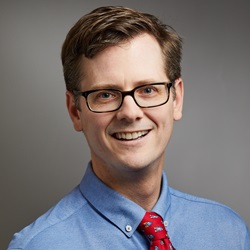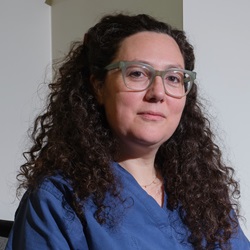Academic hospitalists: Time to redefine or fade away
Despite academic hospitalists' contributions to medicine, lack of a clear definition of the role threatens its visibility and sustainability.
In the past 20 years, hospital medicine has logarithmically expanded its ranks, evolved from a pre-fellowship waypoint into a chosen career, and contributed meaningfully to the clinical, educational, and operational growth and excellence of a wide range of facilities and institutions. Over this time, hospital medicine has defined and redefined itself. In 2006, founding father Robert Wachter, MD, MACP, characterized the specialty's role as a hospital “Swiss Army knife.”
That diversity of roles and skills, while providing many benefits, makes it challenging to define hospitalists in the current medical landscape, leading us to ask: What kind of hospitalists are we, and why does it matter?
Evolution and challenges

The initial need for hospitalists presupposed an academic nature. We were to be classic clinician-educators as hospital systems became more complex and specialized, patients sicker, and hospital stays shorter. In 2009, a consensus group on academic hospital medicine proposed the key domains of clinical and financial issues, teaching and educational mission, and research and promotable activities.
Despite this effort and hospital medicine's continued growth and evolution, the term “academic hospitalist” has never been formally defined. The typical description in perspective pieces and research manuscripts alike has been that we are hospitalists practicing at academic medical centers; our classification, much as the original definition of the hospitalist, was by location rather than expertise. The inadequacy of this characterization is becoming increasingly apparent. At the academic medical center where we work, over 100 hospitalist colleagues practice in strictly clinical roles outside our university's medicine department. Are we all academic hospitalists?

Participation in “academic” activities, namely publishing our work and teaching our learners, is often assumed to be another unique trait of the academic hospitalist. However, recent publications have highlighted the challenges for academic hospitalists in achieving scholarly output and promotion in the face of growing clinical demands. According to the 2020 and 2023 SHM State of Hospital Medicine (SoHM) reports, academic hospitalists spend a minority of their clinical time on teaching services, and they work similar numbers of clinical shifts per year as nonacademic hospitalists. At our institution and many others, nonacademic hospitalists excel in both teaching and scholarship.
Maybe this identity crisis could be resolved based on employers and organizational structures, which influence hospitalist effort and priorities. Are academic hospitalists paid by universities (13.5% of adult hospital medicine groups surveyed in the 2023 SoHM) and nonacademic hospitalists by hospitals or health systems (62.9%)? Those percentages suggest not.

An employer-based definition also discounts the hospitalists providing education and conducting research at community hospitals. And do we need to distinguish between independent hospital medicine divisions versus academic hospitalists who remain within sections of general internal medicine and thus have to compete directly with nonhospitalist faculty for resources and clinical opportunities?
One area where differences are readily apparent is academic hospitalists' substantially lower median annual salary and limited nonclinical salary support. The median annual financial support for the nonclinical work of an academic hospitalist remains less than $10,000 per full-time equivalent, according to the most recent SoHM reports. Anecdotally, when one of us transitioned from a nonacademic position to an academic one in 2010, it came with a $110,000 reduction in annual salary. Based on the job descriptions, it was worthwhile: 16 weeks of clinical service became protected time for academic pursuits. Similarly, the other author has been an academic medicine-pediatrics hospitalist for five years and earns a salary of nearly $100,000 less than first-year hires in adult medicine clinical hospitalist jobs at the same institution.
How do these differences and similarities impact trainees considering career decisions? When we counsel residents interested in hospitalist jobs, our best answer to their understandable confusion is that “academic hospitalist” is code for “a hospitalist with protected academic time at a lower salary.” Realistically, though, most in academia today find that the tasks exchanged for protected time often exceed what is allotted and that such pursuits encroach on personal time. Protected time is also no longer exclusive to academic hospitalists, as many nonacademics receive well-deserved decreases in clinical time for their nonclinical work.
In light of these challenges, acknowledgment of the skills, roles, and value of academic hospitalists is essential. Yet it is often sorely lacking. For example, during the peak of the first wave of the COVID-19 pandemic, an all-hands-on-deck bulletin to faculty at our institution yielded a telling response from a nonhospitalist academic physician: “I can't enter orders, but I'd be happy to supervise a hospitalist.” Amid the crushing challenges of the pandemic, hospitalists led care and problem-solved for their hospitals, but we suspect little has altered the perception of us, by some, as clinical workhorses in need of supervision.
The way forward
Academic hospitalists are not defined by where we work, specific clinical, educational, or scholarly activities, or even protected nonclinical time. The absence of a clear, consistent definition calibrated to the current practice environment has concerning implications for our present and future. In the present, hospitalist well-being is under threat, making retention a progressively uphill climb. Challenges in professional identity formation may heighten the risk for impostor syndrome and burnout.
Looking at the future, the “academic hospitalist tax,” where we earn less for equivalent positions, causes us to compete against other positions for the same recruits, often within the same hospital or health system, and frequently lose.
The inability to effectively hire and meaningfully retain academic hospitalists is a recipe for our extinction. The SoHM reports identify a nearly 10% reduction in the absolute number of surveyed internal medicine hospitalists identifying as “academic” from 2020 to 2023. Although this may not be the case nationwide, the trend is concerning. If this continues, academic hospitalists could vanish in the next 10 years. This doomsday scenario would have dire ramifications for patient care, medical education, and hospital management.
Affirming our identities as academic hospitalists and defining academic hospital medicine would highlight our unique combinations of skills and the value we bring to our sections, departments, and institutions.
More than ever, protected time must be a nonnegotiable aspect of the academic hospitalist job description. Time to pursue meaningful scholarly work (and the psychological bandwidth to do so) is critical. Academic hospitalists may be intrinsically motivated, but we can no longer accept the time-honored “you love it, so you must be willing to do it for less” cost-containment strategy. Protected time away from clinical responsibilities to explore, develop niches, manage multiple diverse roles, and maintain well-being is essential.
Many institutions, including ours, are reconsidering how work is compensated and allocated. Defining our identity and roles as academic hospitalists can alter our job descriptions (shift numbers, structures, teaching service allocation, work unit benchmarks), make the case for our academic support (protected time for education and scholarship), and hopefully provide ongoing benefit to our patients through our continued impact and existence.
To accomplish these goals, establishing another academic hospitalist consensus group feels like an important step. Whether it emerges from an academic hospitalist “Summit 2.0” or another avenue, creating and publishing a comprehensive and clear definition of academic hospital medicine is crucial. The process could also identify needs and areas for academic hospitalist skill development. Over the past 18 years, hospital medicine has cultivated a broad array of academic hospitalist leaders with the knowledge and experience to guide our thinking.
Something must change. We can either abandon the “academic” label and advocate for salary parity or affirm our identities as academic hospitalists by defining and protecting job descriptions that leverage our strengths and recognize our value. The time has come for us to redefine ourselves or risk fading away.



